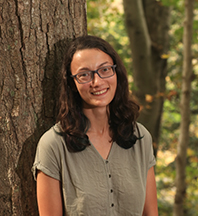Week of October 15, 2023 – October 21, 2023
by Catherine McLaughlin, Environmental Educator
In the peak of fall we begin to see what was hidden in the trees during the spring and summer. During this week a child spotted a squirrel’s nest up in a tree, being revealed after the leaves had fallen. I often wonder how I could have possibly missed seeing a huge nest earlier in the year, that is so clear to see now. They seem to make some well camouflaged nests for breeding season in June and July!
This child reminded me to look beyond what was directly in front of me, but to look up and around. In our fast-paced lives we give quick glances to the things we are familiar with; the world we think we know well. However, with these quick looks we miss the smaller things that blend in because we are not actively looking for them. We may train our eyes to mushrooms, birds, or plants, but we often don’t take the time to just look and see what else is there amongst them.
Children can absorb everything they see and when given the chance to explore they follow their own curiosity. Often on the trails, we are finding woolly bear caterpillars, or what will turn into an Isabella Tiger Moth this time of year. It seems I walk right past them, but the sharp eyes of the children will spot the fuzzy fellow on a leaf or the ground every time and see other insects and creatures amongst the leaves right nearby. Their discoveries inspired me to not only look at a tree and think “Well, that’s this kind of tree”, but to look closer and see if I can find some holes from insects or even the insect itself.
Looking from a child’s perspective can allow us to connect with nature in ways we may not have done since our own childhoods. When you are outside next, take a moment to really look closely and take your time noticing what changes you are seeing this beautiful season. Study the bark of the tree in your yard, count the number of nests in the canopy, or perhaps take a closer look at a plant – you may find a small new friend!


